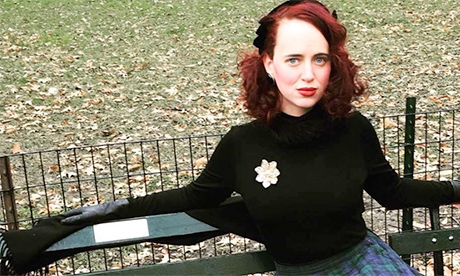Gregorian chants, renaissance choral music and incense wafting from a metallic censer.
In an era when Kanye West runs gospel-inspired services, and megachurches, like Hillsong, release chart-topping hits, these ancient Christian traditions are, unexpectedly, having a moment.
And they’re not just resonating with older generations, either.
Younger people are flocking to late-night Latin Mass — at least they were pre-COVID — and embracing Christian orthodoxy in online spaces.
So says Tara Isabella Burton, America-based author of the forthcoming book Strange Rites and a member of the self-proclaimed “Weird Christian” movement.
“The term is often applied to young, online Christians who embrace the elements of their faith that might be considered weird by the modern world,” Burton explains.
Elements, she says, like the death and resurrection of Jesus.
“We don’t have to explain away miracles or fit them into a modern scientific system, but actually embrace the strangeness of those ideas.”
The allure of Weird Christianity goes beyond an espousal of the Bible. Burton says the otherworldly nature of religious rituals are also appealing to the young and disillusioned.
“There’s a sense of enchantment that often comes with the pageantry,” says Burton, who attends St Ignatius of Antioch in New York City, part of the Episcopalian or Anglo-Catholic tradition.
Burton says one of the factors uniting this community is their “punk”- like rejection of “contemporary secular capitalist culture” in favour of old-fashioned Christianity.
“[There’s a] sense in which the choices we make are part of our personal brand,” she says.
“Where we go to church, what newspapers we read, what we buy — all of these qualities together, make up this kind of identity through consumption.
“What it means to belong to a faith is never quite as crystal clear as what you believe in your heart, which itself may change from day to day.”
‘An element of drama’
While “Weird Christianity” may have a larger following in America, Australian places of worship are also attracting younger congregants through their history and “mystery”.
Such is the case at Sydney’s Christ Church St Laurence in Sydney’s CBD.
Like St Ignatius, the church is part of the Anglo-Catholic or High Anglican strain of Christianity, which places a large emphasis on tradition.
The church’s rector Daniel Dries says that while the congregation has an average age of 60, younger people are choosing to attend services that are rich with ancient rituals.
“It’s not theatre, but there’s certainly an element of drama,” he says, pointing to the candles, incense and elaborate liturgical wear that feature in services.
“We sing music here that goes back to the Middle Ages — Gregorian chants — and renaissance choral music, so we rely on young people, who are very involved in those things.”
Reverend Dries believes that Anglo-Catholicism has an “element of mystery about it” that can be missing from everyday life or other religious practices.
“Some of our young people come from a more evangelical tradition, which is sort of word-based and very long sermons or improvised prayers,” he explains.
“I think for some people … there sometimes comes a point where they can’t deal with words anymore, and there’s this genuine desire to enter into silence, mystery, music and ritual.” Continue reading
- Tara Isabella Burton is a writer of fiction and non-fiction. Winner of the Shiva Naipaul Memorial Prize for Travel Writing, she completed her doctorate in 19th century French literature and theology.
